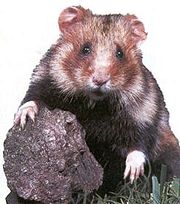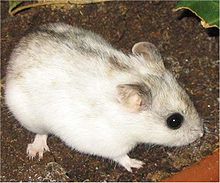Taming and handling
January 7, 2010Before you handle your hamster you will need to tame it, which means overcoming its fear. You will enjoy doing this as long as you understand it will take time and patience. Do not put it off, because it will be easier while your hamster is still young.
Talk to your hamster all the time you are taming it. It will get to know your voice. Move your hands gently - they must seem large and frightening to a small animal.
You should be able to tame your hamster in less than three weeks, if you follow the described method. Do not rush it, or you may have to start all over again.
1. First watch your hamster for a few days to find out when it is awake and active - the best time to start taming. Note its favorite foods so you can use them to overcome its fear.
Now start putting food straight on the cage floor, so your hamster gets used to your hand and learns that it means no harm. Do the same routine for few days, leave your hand there while the hamster eats.
2. When your hamster is confident enough to eat beside your hand, put the food in the palm of your hand. It may be some time before the hamster will eat from your hand without fear. When it does, you can stroke it gently with one finger along its back, the way the fur grows. Never stroke its head.
3. Next, get your hamster used to being picked up. When it is eating from your hand, cup the other hand over it, and lift it gently a little way off the ground for a few moments at a time.
After a few more days, if your hamster seems happy being lifted up, you can take it right out of the cage in your cupped hands.
4. Play with it over a table, letting it run from one hand to the other. Soon it will be confident enough to run along your arm.
Remember
+ Play with your hamster at the same time every day.
+ Speak to it softly all the time.
+ Play with it for short times only, but often.
+ Handle it over a table or near a the ground, so that if you drop it, it does not have far to fall.
Do hamsters bite?
Only if they are frightened. A nip from a young hamster is not really painful, and not harmful. If your hamster does nip your finger, try not to frighten it more by jerking your hand away or screaming.
Source: Taking Care of Your Hamster by Helen Piers.




